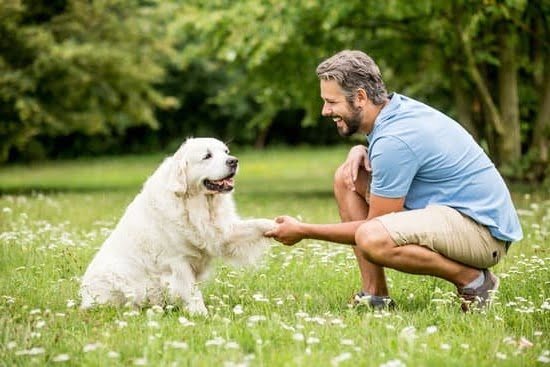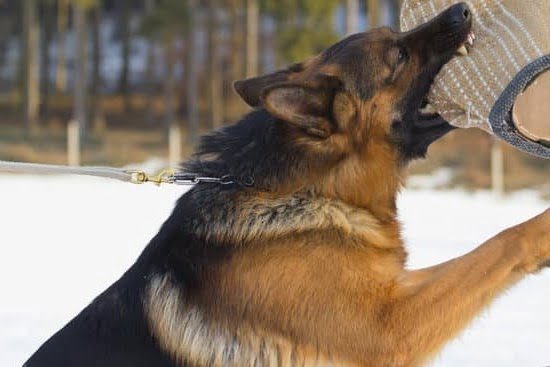Scent training for dogs is a valuable tool for pet owners looking to improve their furry friend’s behavior and well-being. This specialized training involves teaching dogs to use their sense of smell to locate and identify specific scents. Whether it’s for search and rescue, detection work, or simply for fun, scent training can provide numerous benefits for both dogs and their owners.
Training a dog’s sense of smell can be incredibly beneficial as it taps into their natural instincts and abilities. By engaging in scent training, dogs are not only mentally stimulated but also provided with a rewarding activity that satisfies their natural curiosity. Additionally, scent training has been proven to enhance a dog’s overall mental and physical well-being, making it an essential aspect of canine enrichment.
In this article, we will explore the importance of scent training for dogs, providing a step-by-step guide to getting started with the necessary tools and resources. We will also delve into common mistakes to avoid in scent training, as well as advanced techniques that can take your dog’s skills to the next level.
Furthermore, we’ll discuss how scent training can positively impact your dog’s behavior and share real-life success stories that highlight the remarkable outcomes of this specialized training method.
The Importance of Scent Training for Dogs
Scent training for dogs is an essential aspect of their overall well-being and behavior. Dogs have an incredible sense of smell, and utilizing scent training can provide mental stimulation, physical exercise, and strengthen the bond between the dog and its owner.
One key importance of scent training for dogs is that it taps into their natural instincts. Dogs have been bred for centuries to use their keen sense of smell for hunting, tracking, and other purposes. By engaging in scent training activities, dogs are able to fulfill this innate need and feel a sense of fulfillment. This can result in a calmer and more contented dog overall.
Another critical aspect of scent training for dogs is its impact on their behavior. Dogs who are engaged in regular scent training exercises are often more focused, less anxious, and better behaved. The mental stimulation provided by using their olfactory senses can reduce destructive behaviors such as chewing or excessive barking.
Additionally, scent training for dogs can also have positive effects on their physical health. Engaging in scent work provides exercise through mental stimulation, which can be especially beneficial for older or less mobile dogs. And because the activities involved in scent training are low-impact, they are suitable for dogs of all ages and fitness levels.
| Importance | Effects |
|---|---|
| Natural Instincts | fulfillment and contentment |
| Behavioral Improvement | reduction in destructive behaviors |
| Physical Health |
Getting Started With Scent Training
Scent training for dogs is a valuable skill that can benefit both the mental and physical well-being of your furry friend. If you’re looking to get started with scent training, there are a few essential tools and resources that you’ll need to have on hand.
Here are some key items to consider adding to your scent training toolkit:
- Scented Training Aids: These aids, such as scent cloths or scent tubes, are used to introduce your dog to specific scents that they will later be asked to search for. They come in a variety of scents, including essential oils like birch, anise, and clove.
- Treats: High-value treats are essential for rewarding your dog during the scent training process. Choose treats that your dog finds irresistible and use them as a positive reinforcement tool when they successfully locate the target scent.
- Harness and Leash: It’s important to have good control over your dog during scent training sessions, especially as they become more adept at following a trail or locating hidden scents. A comfortable harness and leash will help ensure their safety and allow you to guide them effectively.
- Scented Training Games: There are several tools and games specifically designed for scent training for dogs, such as treat-dispensing puzzle toys or hide-and-seek games with scented objects. These can make the learning process more engaging and enjoyable for your pup.
The right resources can also make a big difference in helping you learn how to effectively conduct scent training with your dog. Consider enrolling in a reputable online course or seeking out books, videos, or online tutorials from experienced trainers who specialize in scent work for dogs. Remember that patience and consistency are key when starting out with scent training – both for you and your four-legged companion.
Step-by-Step Guide to Scent Training for Dogs
Scent Training for Dogs is a valuable tool for both pet owners and working dog handlers. This type of training harnesses a dog’s natural ability to use their sense of smell in order to locate and identify specific scents. Whether it’s for search and rescue operations, detection work, or simply as a fun and enriching activity for your pet, scent training can provide numerous benefits.
To get started with scent training for dogs, there are a few essential tools and resources that you will need. First and foremost, you will need high-value treats or toys to reward your dog during the training process. Additionally, you will need a set of scent containers or materials with distinct odors that your dog can learn to recognize. It’s also helpful to have a dedicated space for training where your dog can focus without distractions.
Once you have gathered the necessary tools and resources, it’s time to begin the step-by-step process of scent training for dogs. The key is to start with a strong foundation by teaching your dog to associate the specific scent with a positive experience, such as receiving a treat or favorite toy.
From there, you can gradually increase the difficulty by introducing new scents and varying the search conditions. This incremental approach helps build your dog’s confidence and skills in scent detection.
Overall, scent training for dogs is not only an engaging activity but also provides mental stimulation and enrichment for your furry friend. By tapping into their natural instincts, dogs can feel accomplished and fulfilled when successfully completing scent detection tasks.
Moreover, this type of training fosters better communication between dogs and their handlers, leading to improved obedience and overall behavior. Whether it’s in a professional setting or simply as part of everyday life with your pet, incorporating scent training can be incredibly rewarding for both you and your canine companion.
Common Mistakes to Avoid in Scent Training
Not Being Patient and Consistent
One of the most common mistakes in scent training for dogs is not being patient and consistent. Scent training requires time, patience, and repetition. It’s important to set realistic expectations and understand that every dog learns at their own pace. Rushing the process can lead to frustration for both you and your dog.
Using Strong or Confusing Scents
Another mistake to avoid in scent training is using strong or confusing scents. Dogs have a much keener sense of smell than humans, so what may seem like a subtle scent to us can be overwhelming for them. It’s important to start with scents that are easily distinguishable for your dog and gradually introduce more complex scents as they progress in their training.
Skipping Basic Training Steps
Skipping basic training steps is also a common mistake in scent training for dogs. Before diving into specific scent work, it’s crucial to ensure that your dog has mastered basic obedience commands such as sit, stay, and come. These foundational skills will form the basis for successful scent training.
By avoiding these common mistakes, you can set your dog up for success in their scent training journey. Remember to be patient, use appropriate scents, and establish a strong foundation of basic obedience before progressing to more advanced techniques. With dedication and consistency, you’ll be amazed at how quickly your dog can excel in scent training.
Advanced Scent Training Techniques for Dogs
Once your dog has mastered the basics of scent training, there are advanced techniques that can take their skills to the next level. These techniques not only challenge your dog’s olfactory abilities but also provide mental stimulation and enrichment. Here are some advanced scent training techniques to try with your canine companion:
1. Discrimination Training: This technique involves teaching your dog to differentiate between similar scents. For example, you can train your dog to identify a specific type of fruit or different herbs by scent alone. This requires a high level of concentration and the ability to distinguish subtle differences in odors.
2. Scent Tracking: Take your dog’s scent training to the great outdoors by teaching them how to track scents over varying terrain. You can start with simple tracks in your backyard and then progress to more challenging environments such as wooded areas or fields. Scent tracking not only taps into your dog’s natural instincts but also provides an excellent form of physical exercise.
3. Multiple Odor Detection: Once your dog is proficient at recognizing a single odor, you can introduce multiple scents for them to identify. This advanced technique requires a higher level of cognitive processing as it challenges your dog to switch between different scents and indicate each one separately.
Incorporating these advanced scent training techniques into your dog’s routine can further enhance their sensory abilities and mental acuity, leading to a happier and more fulfilled pup.
Remember, patience and consistency are key when implementing these advanced techniques, as they require more focus and precision from both you and your furry friend during training sessions. With dedication and practice, you’ll be amazed at what your dog is capable of achieving through scent training.
How Scent Training Can Benefit Your Dog’s Behavior and Well-Being
Scent training for dogs goes beyond teaching them to sniff out specific scents-it can also have a significant impact on their behavior and overall well-being. From providing mental stimulation to improving their confidence, there are several benefits that scent training can offer to our furry friends.
Mental Stimulation
Engaging in scent training exercises provides dogs with a mental challenge that can help keep their brains active and sharp. When they are tasked with using their sense of smell to locate certain scents, it stimulates their cognitive abilities and prevents boredom, ultimately leading to a happier and more fulfilled pet.
Physical Exercise
Aside from mental stimulation, scent training also provides physical exercise for dogs. Whether it’s through searching for hidden treats or tracking specific scents outdoors, this type of training encourages movement and exploration, helping to maintain your dog’s physical health while fulfilling their natural instincts.
Emotional Well-Being
Scent training can also have a positive impact on a dog’s emotional well-being. By engaging in activities that tap into their natural abilities and instincts, dogs gain a sense of purpose and satisfaction. This can lead to improved confidence and reduced anxiety or stress, ultimately contributing to a better overall quality of life for our canine companions. Through the fulfillment of these needs and instincts, dogs are able to feel more content and at ease in their environment.
Success Stories
Scent training for dogs has proven to be incredibly beneficial for many pet owners and their furry companions. One such success story is that of Max, a rescue dog who struggled with anxiety and fear-based aggression.
Through scent training, Max was able to build confidence and overcome his behavioral issues. His owner, Sarah, mentioned that the mental stimulation provided by scent training helped Max focus his energy in a positive way, leading to a significant improvement in his overall demeanor.
Another inspiring example is Luna, a working dog who was trained in search and rescue operations. Scent training played a crucial role in enhancing Luna’s ability to detect specific scents during missions. This not only improved her effectiveness in locating missing persons but also forged a stronger bond between Luna and her handler. The rigorous scent training regimen allowed Luna to fulfill her duty with precision and reliability.
One more notable success story comes from Bailey, a reactive dog who struggled with impulse control. By incorporating scent training into Bailey’s daily routine, her owner Karen noticed a marked reduction in aggressive outbursts and an increase in focus and attention span. This positive change enabled Bailey to enjoy social interactions with both humans and other dogs, ultimately leading to a happier and more fulfilling life.
| Dog’s Name | Training Outcome |
|---|---|
| Max | Improved confidence, reduced aggression |
| Luna | Enhanced search and rescue abilities, stronger bond with handler |
| Bailey | Reduced aggression, improved focus and attention span |
Conclusion
Scent training for dogs is a powerful tool that can benefit both dogs and their owners. This specialized training provides mental stimulation, helps improve behavior, and can even save lives through search and rescue efforts. With the right tools and resources, anyone can get started with scent training.
By following a step-by-step guide and learning from common mistakes, dog owners can ensure successful training for their furry companions. Advanced techniques in scent training can further enhance a dog’s abilities, providing new challenges and opportunities for growth.
The future of scent training for dogs looks promising as more and more people recognize the benefits of this type of training. As research continues to explore the capabilities of canine scent detection, we can expect to see advancements in the field that will further enhance a dog’s ability to use their keen sense of smell effectively.
This means that scent training will continue to play an important role in improving behavior, providing mental stimulation, and even assisting in life-saving efforts.
In conclusion, if you’re considering getting started with scent training for your dog, there’s no better time than now. The benefits are clear, the resources are readily available, and with dedication and patience, any dog owner can help their pet thrive through scent training.
Whether it’s for fun or practical purposes such as search and rescue or medical detection work, scent training has the potential to transform a dog’s life while deepening the bond between them and their owner.
So why wait? Start your journey into scent training today.
Frequently Asked Questions
Is Scent Training Good for Dogs?
Scent training is indeed good for dogs, as it stimulates their natural olfactory abilities and provides mental stimulation. It’s a great way to engage their senses and build a stronger bond with their owners.
How Do You Start a Dog Scent Training?
To start dog scent training, it’s important to begin with simple exercises and gradually increase the difficulty level as the dog becomes more proficient. Using a specific cue to indicate when the dog should start searching for the scent is also crucial.
What Scents Are Good for Dog Training?
Good scents for dog training include essential oils such as lavender, clove, and birch. These scents are commonly used in scent training because they are safe for dogs and have distinctive smells that can be easily recognized by the animals.

Welcome to the blog! I am a professional dog trainer and have been working with dogs for many years. In this blog, I will be discussing various topics related to dog training, including tips, tricks, and advice. I hope you find this information helpful and informative. Thanks for reading!





